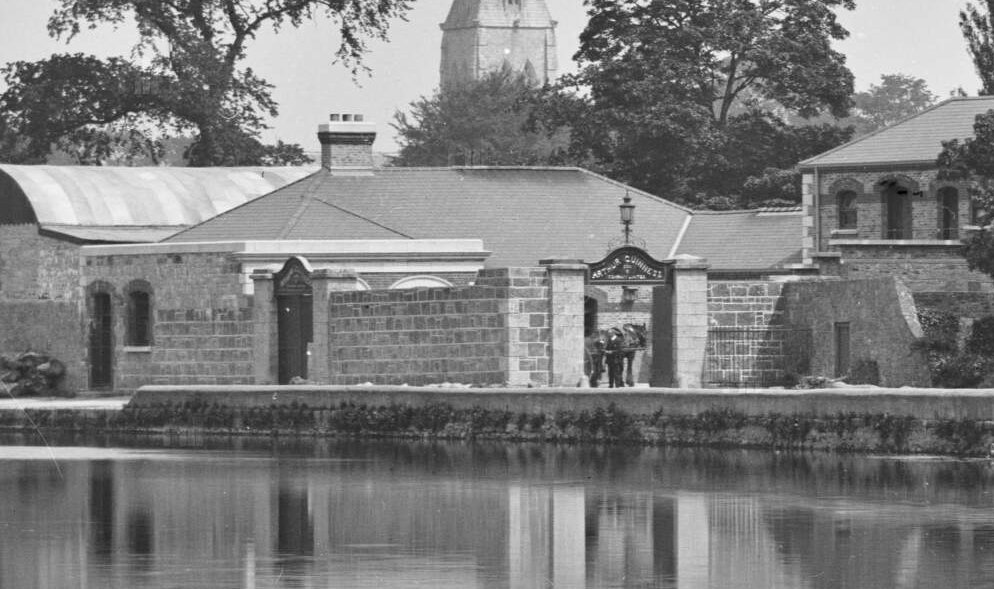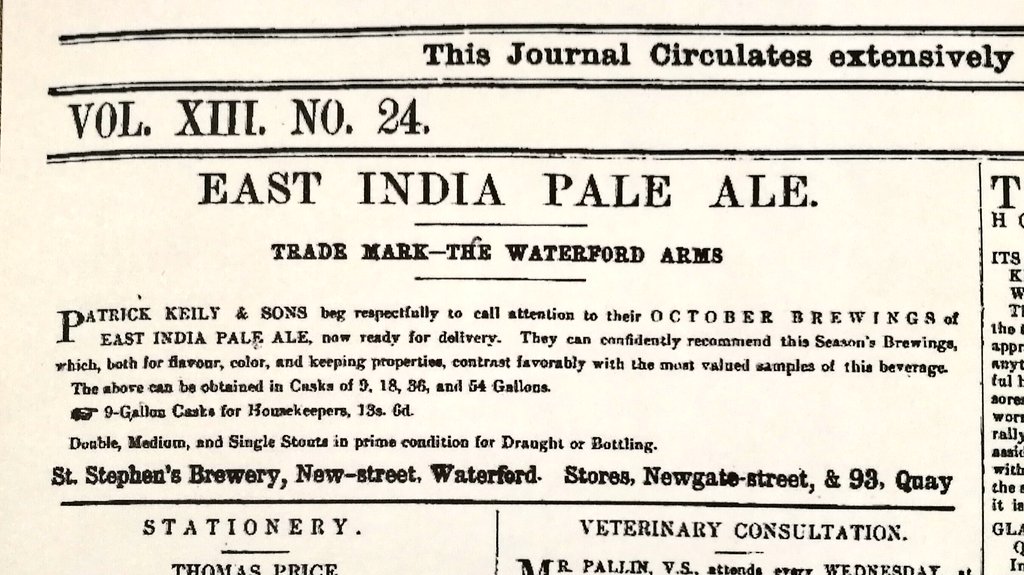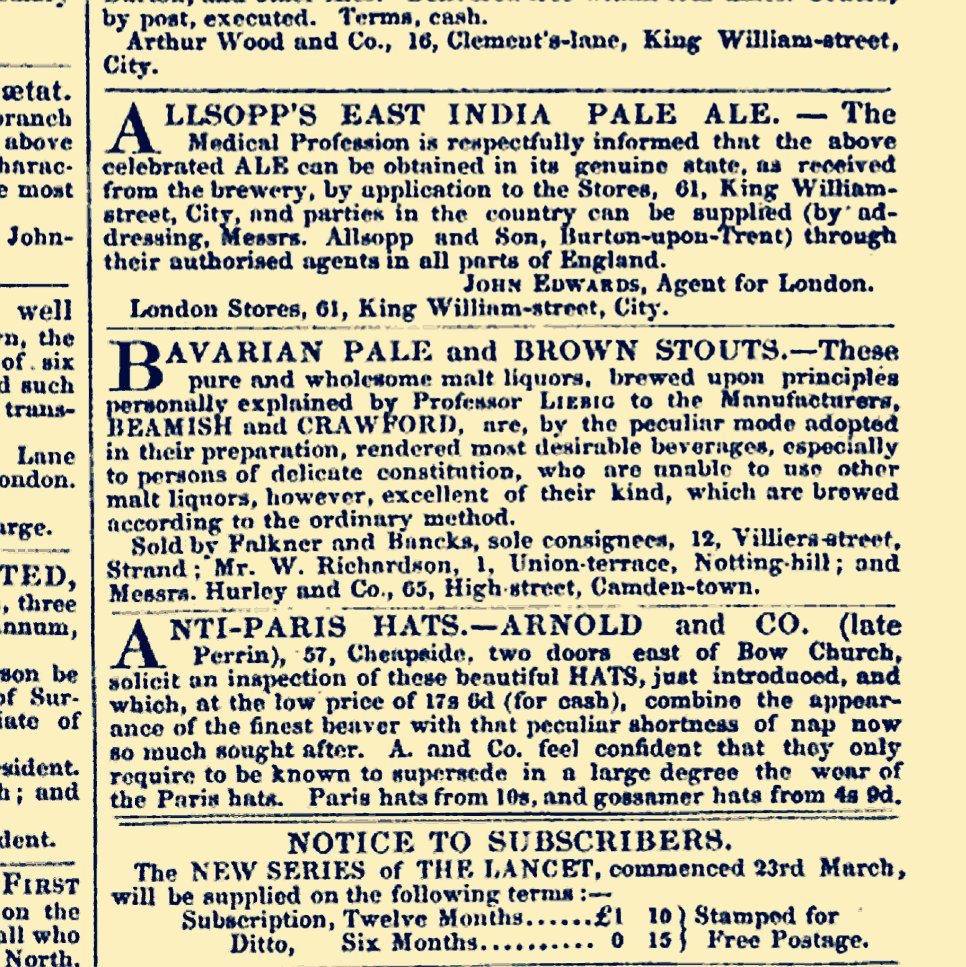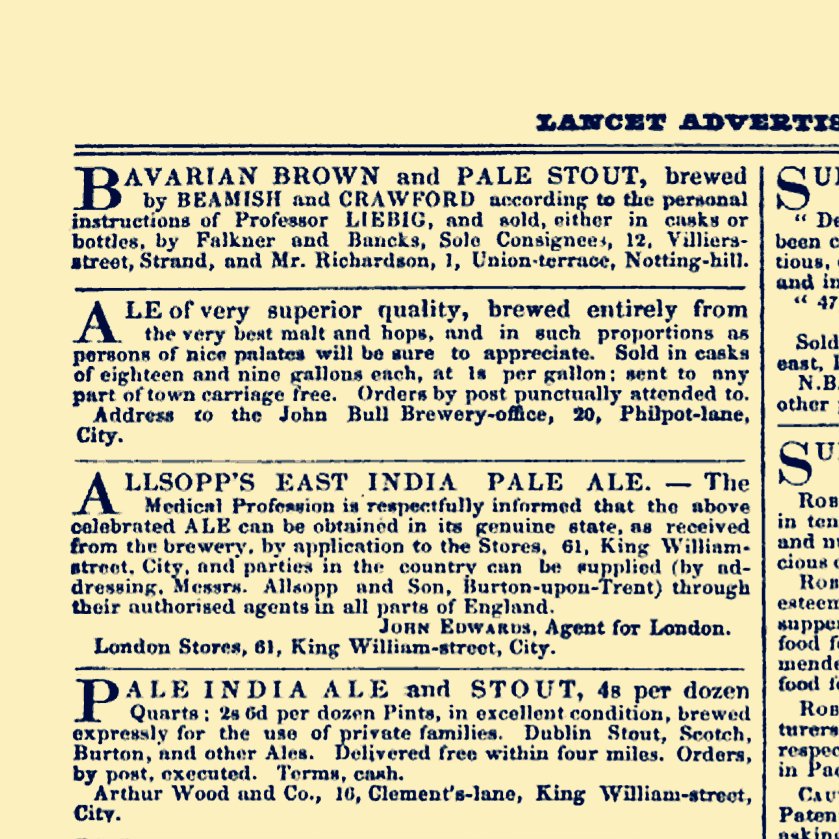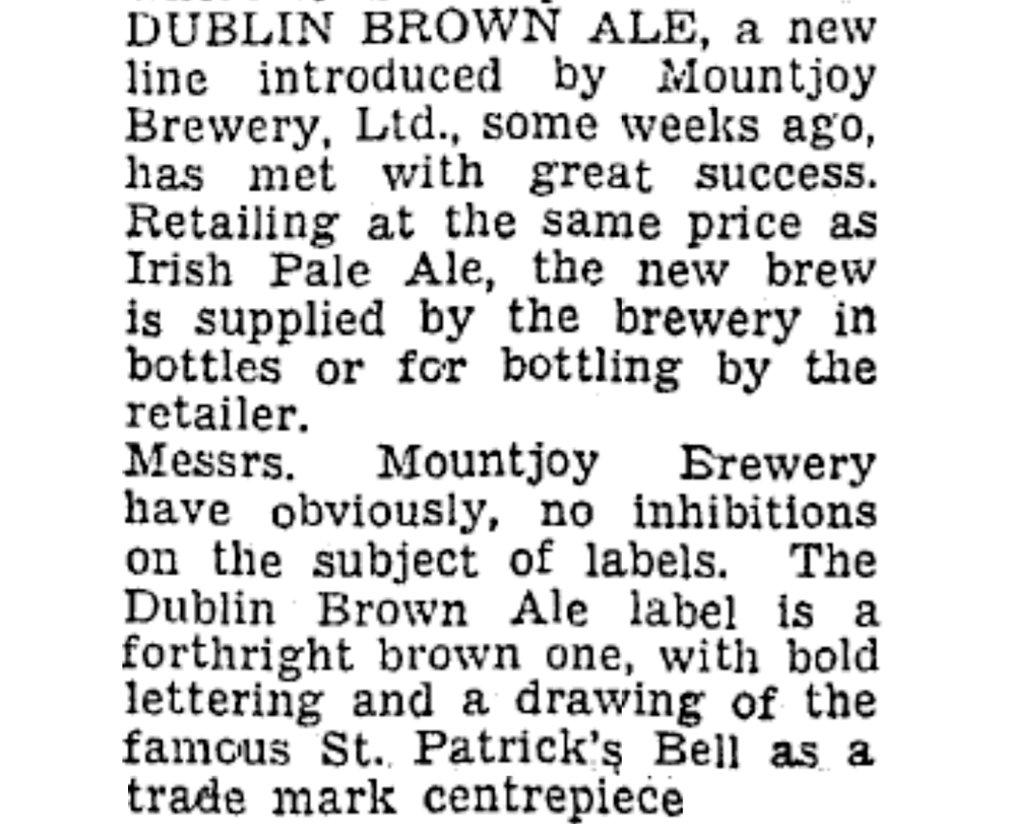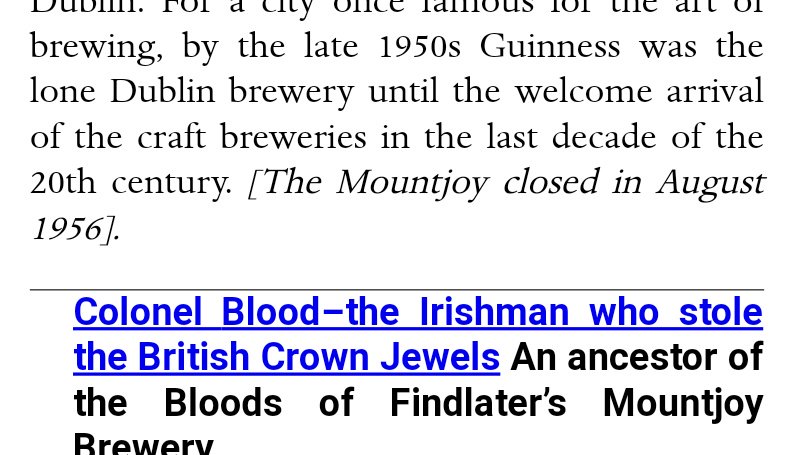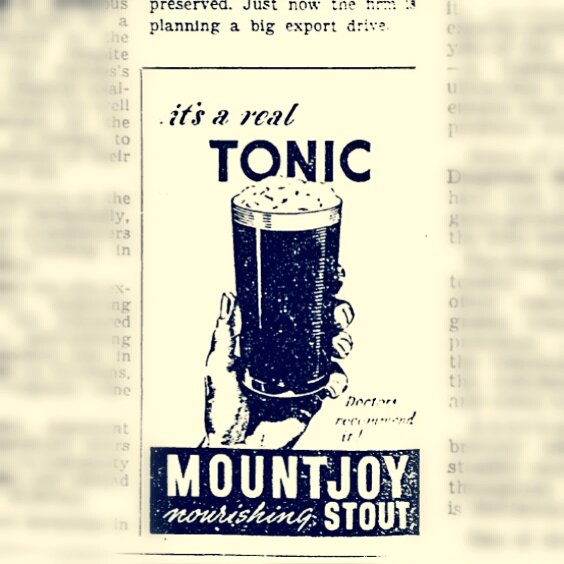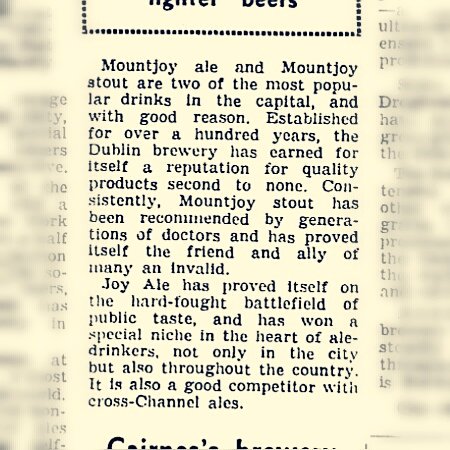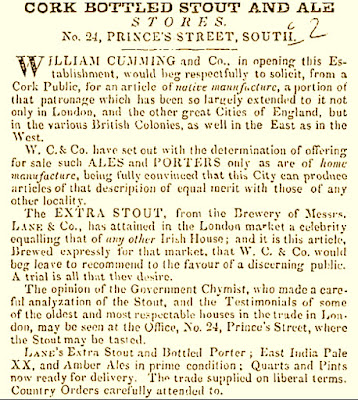A couple of weeks ago I wrote about
William Cobbett's visit to Kilkenny and his thoughts on the city, people and the beers of Ireland in general ... and while down my rabbithole of beer history research I came across an article about a visit by a group of Waterfordians to Kilkenny that I thought would be a nice follow up for balance ... with a more positive slant for Kilkenny and for the local beer.
It was published in The Waterford News and Star in September 1873 and I've included the article in its entirety below ... but a couple of intriguing parts stood out to me with relation to the Smithwicks brewery, which they visited...
'... the Black Abbey Brewery, otherwise St. Francis's, owned and worked by [...] E. Smithwick...'
The Black Abbey is a completely different site to St. Francis's Abbey and it's a little strange that a visitor should confuse the two ... furthermore at this time Sullivan's would have then been the closest brewery to The Black Abbey. Perhaps the writer of the article had one too many on the trip and confused the two, or did someone not want the visitors to know there were two breweries in close proximity to one another in the city, and choose to amalgamate both in our visitor's mind? The writer had visited the city on a number of occasions so either way it seems a strange comment. (I can't of course rule out that it was also known as the Black Abbey Brewery but I can't find any reference to this name, and it would seem highly unlikely...)
We'll never know but it's a lesson to all researchers to be wary about what you read in old newspapers...
---
'We were taken into what may be termed the "Refreshment Room" on these annual visits, into a large cellar filled with October ales, eleven months old, clear as amber when filled out, ardent as malt when imbibed. [...] with a measure of strong ale in hand and it had to be drunk... '
I wonder if that 'Refreshment Room' is still in use? I confess I've never done the tour so I don't know...
The comments on the storage time, colour and strength - both in flavour and, presumably, alcohol are interesting to read, and sound a far cry from the Smithwick's of now apart perhaps from the colour - but there was a red-ish ale in Kilkenny even back then it would seem ... if not what we think of as an 'Irish Red Ale'!
Not that we should think that Smithwick's have always just brewed one beer - and they don't anymore anyhow, and nor do they brew in Kilkenny of course - as beer history books list the varied output from the brewery in its early days...
But again it's nice see some of this information in print and I came across an advert from The Munster Express in 1866 with regard to Smithwick's opening a store in Waterford to help satisfy demand in the city, although it was possibly a logistical help with exports too.
It also shows that there was a good connection between Waterford and the Smithwick brewery, which would make sense given their relatively close proximity on the new-ish railway, and explains why our visitors would make a point of visiting the brewery on their trip to Kilkenny. (Beresford Street was what is now Parnell Street in Waterford.)
{Edit} Here's another advert showing more detail of what they were brewing in 1897 ... Stouts, Mild, Bitter plus an IPA and Dinner Ale ... and a good amount for export too it appears.
---
'... we were taken my Mr. McGrath through the extensive orchards, under the experienced Mr Hayes, and I must say I never saw anything to near equal the great profusion of luxuriant crops of apples and pears I there witnessed. The crop proves Mr. Hayes to be one of the top of his luscious profession.'
I never thought of there being an urban orchard at the back of the brewery but the Ordnance Survey maps of around this time do indeed show a great deal of space down towards the river. Top quality apples and pears in the Smithwick's orchard it appears - non for cider or perry?!
... and wouldn't we all like a 'luscious profession'?
So, it looks like Kilkenny has been a tourist destination for quite a while, and although Smithwick's site is no longer a working commercial brewery, the new, reborn
Sullivan's Brewing Company do a few specials in the small kit in their tap room and
Costellos Brewery have a full production brewery just out from the city centre, which is great for a city with such a brewing history. (I've
written previously about beery places in the city too...)
I wonder will either make an eleven month old, amber, strong October ale that I can quaff in a cellar?
I can dream I suppose...
Liam
Thanks as ever to my local library...




